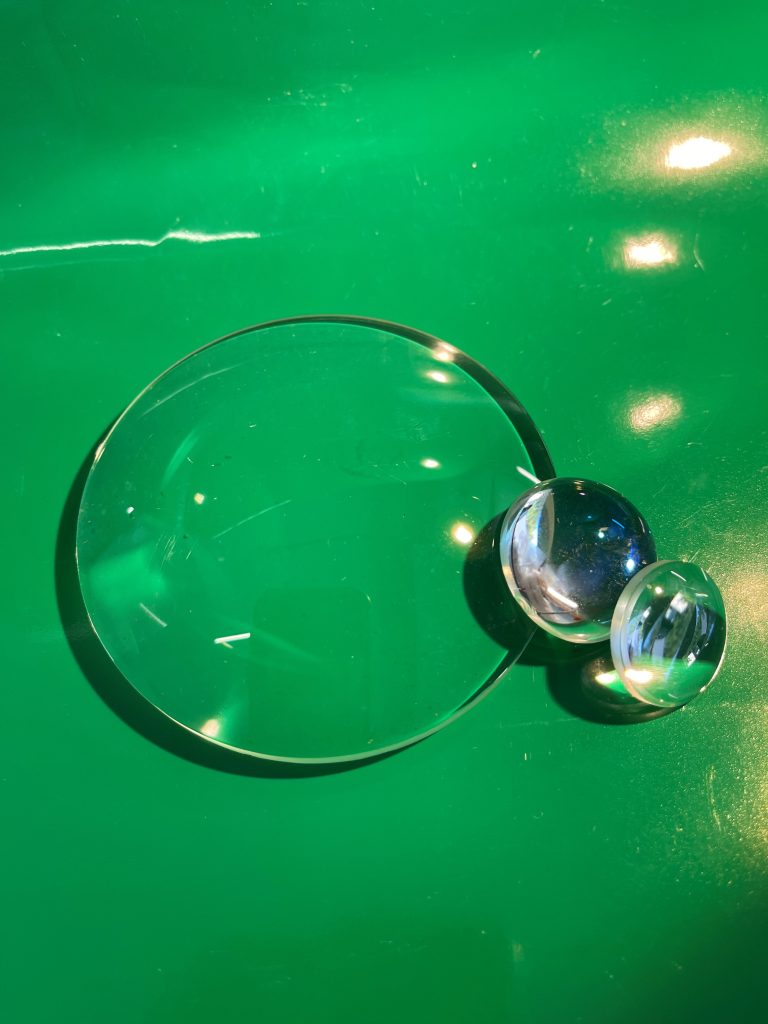As a crystal that is highly transparent in VIS/IR spectrums, specifically in the range of 0.2 to 12 μm, BaF2 well suited for various optical systems that need to operate in a wide range of spectrums, and specifically the IR region, with good efficiency and durability. BaF2 lenses and windows fabricated at FCT are often part of laser systems and thermal imaging equipment used in different settings, including military, research, medical testing and aerospace technology. When it comes to choosing optical materials for IR applications, engineers look at various parameters such as transmission, refractive index, spectral dispersion, and chemical and environmental stability, all of which are unique for BaF2.
BaF2’s significance in the field of IR optics comes from its unique properties
Transparency in Infrared Region:
BaF2 is highly transparent in a wide spectral range, including IR. Our material’s transmission ranges from 150nm to 14μm.
Refractive Index:
The lower refractive index of BaF2 (nd =1.4624 @ 2.58 μm) in comparison to other IR materials, such as Ge and ZnSe, creates an opportunity to reduce or eliminate the need for antireflective coating applications when producing some optical systems.
Spectral Dispersion:
The Abbe number, which is inversely related to spectral dispersion of a material, is equal 81.61 for BaF2. In comparison to other optical materials, that puts BaF2 in a group of crystals known for their low spectral dispersion and well suited for systems where reduced chromatic aberration and better visual quality are of great importance.
Chemical and Environmental Stability:
BaF2 is chemically stable, and it can withstand harsh environmental conditions.
It can withstand temperatures up to 800 deg C. in dry environments. It is slightly hygroscopic with long term exposure to moisture. Its significant attribute is the resistance to high-energy radiation. The BaF2 crystal’s low chemical reactivity, coupled with the stability of its physical properties under a wide range of temperatures, makes this optical material a good candidate for applications in environments with an increased presence of ionizing radiation and high energy particles, like in an aerospace environment.

BaF2 optical parts and their presence in different applications:
The BaF2 parts that we provide in the form of windows, blanks, rods, prisms and more are highly compatible with the industry standards. Thanks to large single crystal sizes (up to 175mm for polycrystalline and 100mm for monocrystalline), high purity, and zero or limited number of grain boundaries, we offer crystals at one of the highest qualities available in the market today. Our optical parts are highly suitable for applications
such as excimer lasers, microscopes, spectrographs, spectrophotometers, refractive telescopes, optical instruments for thermal imaging, and night vision. As mentioned before, BaF2 is known to have good resistance to high-energy radiation damage. It can efficiently convert high-energy radiation into visible light. Thanks to this particular property, BaF2 crystal parts are becoming more important in space borne surveillance systems, specifically, those, placed in a high altitude of our planet’s orbit. There, they are not protected by the Earth’s atmosphere and are therefore exposed to increased levels of ionizing energy from gamma rays and x-rays. Currently, BaF2 is regarded as the fastest inorganic scintillator. BaF2 crystals from FCT are well suited for particle and high energy physics experiments as parts for scintillation detectors. They can detect and measure the energy of charged particles and photons; making them useful in positron emission topography and to separate high energy neutrons. Our BaF2 crystals have been also a well-established optical material in the more traditional fields like, microlithography.
Future of BaF2 optics:
Even though some may not give enough credit to BaF2 optical crystals, because it is an “old technology”, the fact is that BaF2 is still irreplaceable in a number of industrial and scientific applications and for our company the growing advancements behind the UV/VIS/ IR optics, make the improvement and customization of our product an ongoing process.


